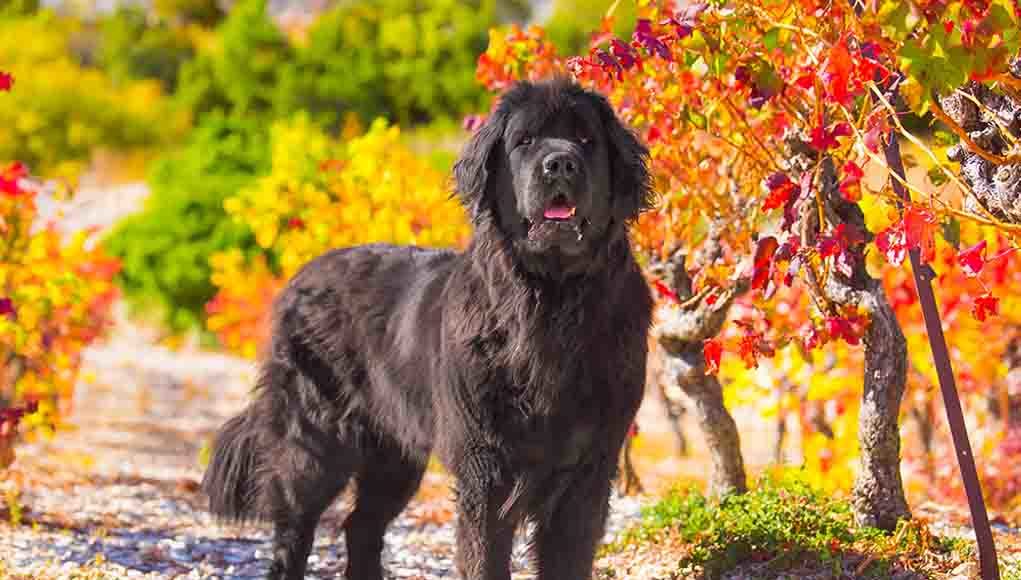Table of Contents
In the vast seas, broad horizon, or even a backyard, imagine a giant fluff lending you a helping paw. The Newfoundland dog breed may be your new best companion with its undeniably calming, adoring, and bear-like features.
These gentle giants are known for their sweet and tender disposition. They are perfect for families with kids or even working buddies.
But these giants were not always giants. Have you seen how cute Newfoundland puppies are? They are adorable!
But these big fluffs are very reliable and capable as working dogs. Who knew this big fluff could come from such a heroic and brutal voyage history?
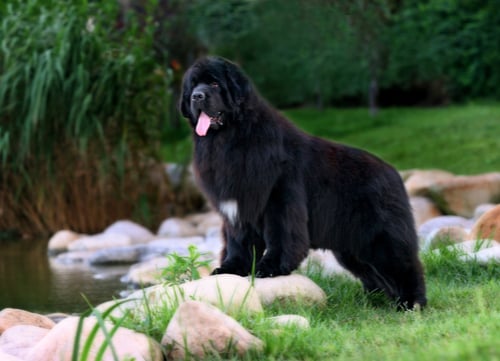
History of Newfoundland Dog Breed
The origin of Newfoundland is still unresolved.
Found in Newfoundland, Canada, these gentle giants have conquered not only families but also seamen, soldiers, and explorers.
These devoted fur buddies have come a long way in residing with humans.
They are best known for helping alongside seamen or fishermen in boats. They have natural skills in swimming and bodyguard skills as well.
Some even have said they may be a mix of two breeds; American Black Wolf (extinct) & Tibetan Mastiff. Others have figured that they have been left by Vikings and copulated with native wolves.
Either way, Newfoundland dog breeds have a well-deserved and reputable name. Through aiding fishermen, soldiers, and even families.
They have done a great job and are still in the long run.
What are Newfoundland dogs like? Let's take a look at some features to get you started.
Newfoundland Physical Characteristics
These gentle giants are built with a prominent body build with a bear-like appearance. The deep-body structure consists of thick bones and muscles, making them perfect for working a variety of activities.
Newfoundland's average height for adults is from 26 inches to 28 inches.
Males can weigh from 130 to 150 pounds, and females can weigh from 100 to 120 pounds. Usually, males are more prominent and taller in terms of physique.
Newfoundland dog breeds' standard coat colors are Black, Brown, Gray, and White & Black. But there are also Newfoundland colors registered in Beige, Black& Tan, White & Brown, and White & Gray.
Their deep droopy eyes match their floppy ears, thus creating a bear-like appearance.
Of course, their seemingly prominent head and muscular neck also contribute to their appearance.
Their overall body with deep-body features creates a proud stance. Their body proportion is fair, which goes along with their thick double-coat.
This breed incorporates a double coat with an outer and inner layer. Their outer layer is fuzzy and fair. It helps prevent moisture and filth.
At the same time, their undercoat helps them regulate their body temperature during cold and warm seasons.
Their feet are wide and webbed for a more efficient take on water activities.
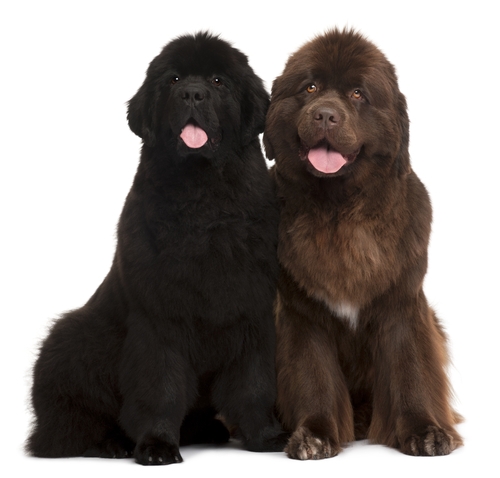
Newfoundland Dog Breed Temperament
The Newfoundland dog breed is the perfect family companion. They are known for their large stature and their very big-hearted personality. This breed is exceptionally fond and devoted to its family.
Their patience and tolerance have brought them an exceptional reputation.
They are great with children. Unpredictable behavior from children may be inevitable, but Newfoundlands know their way through this.
The Newfoundland dog breed is a social butterfly. They are pretty receptive to strangers. Of course, they're still vigilant toward their surroundings, especially when in an unfamiliar environment.
Newfoundland dogs are less intimidated by other dogs and even friendly towards other pets as well. Yes, it includes cats.
Although their large stature is intimidating, their personality doesn't stop them from making friends with other animals.
It may be a play or unwinding on the cold surface of the floor. They luxuriate everyone with their demeanor.
It's important to remember that these dogs are large and require a spacious place to stay. Sadly, apartment homes are unlikely their turf.
Especially with their physique, their body requires movements to keep healthy. Maybe a backyard or a roomy area in the house could be their space.
They are very versatile when it comes to changes. Especially when trained young, they are very open to strangers when appropriately introduced.
As long as that stranger does not display suspicious or harmful activity, Newfoundlanders are unlikely to react.
Newfoundlanders thrive on family and companionship, but they are not for homes where they are left alone for more than a few hours. These dogs require being around their family or people constantly.
Newfoundlands are vocal as well, but they can outgrow them with age and training. Normally dogs try to communicate with us and this breed isn't very different.
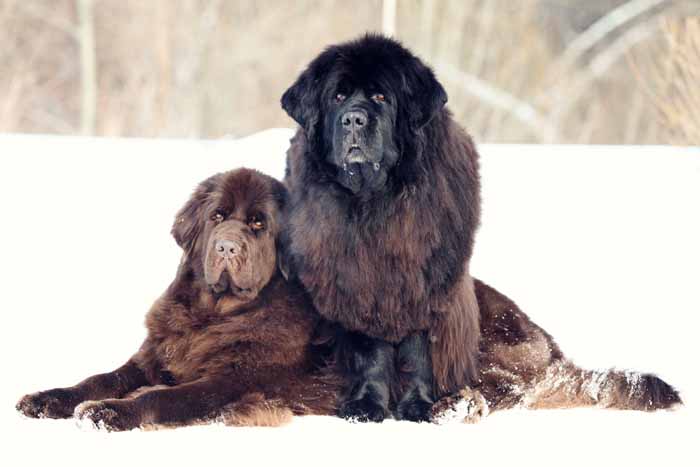
Newfoundland Dog Breed Activity Level
The Newfoundland dog breed has been exposed to several activities as working dogs.
They can balance activities from water, nature, service, or even home ventures. There's just so much these gentle giants can do.
Although they are known for their working ability, Newfoundlands are pretty sensitive during their puppy stages. Since they are in a large category, they tend to grow quickly.
During this stage, it's best not to expose them to long duration and extensive activities.
In this stage, their bones are still underdeveloped. Swimming may be the best sport in this stage, as it is the least risk of developing their joints and bones.
Owners should wait at least a year until their growth has fully developed before presenting their activities that may be strenuous.
Giving them at least 30 to 40 minutes of outdoor activities daily can appease their exercise needs. Juggling their daily activities can help them stay stimulated.
Newfoundland dogs are brilliant. Outdoor activities such as water sports, tracking, and obedience training are their forte.
Training a Newfoundland Dog Breed
It's essential to do a variety of exposure to these gentle giants when they're still young. Socialization with humans, kids, and even other small pet animals is essential to develop their social skills.
The key to mastering their skills is introducing them to different environments and surroundings while still young.
Helping them identify and familiarize situations, objects, and people can help them figure out safety and awareness in this stage.
Of course, you must do this properly. Bluntly exposing them without regard to their state may harm their comfort and security around you.
Training Newfoundlands are on a moderate level. They do respond to training better when treated benevolently.
They can easily register commands when they're acknowledged a lot. Avoid reprimanding dogs when they have done something that you didn't spectate.
It is better to apprise them after a second they have done it.
This goes the same for positive results in training. Apprise them after a second that they have done it. By this, they can easily register and associate behavior and its response.
They also have a fair energy level, but they are pretty playful. Especially when they're young, they tend to play a lot, and this is the best time to render their energy to training.
Over the years, thoroughly, when they become older, they may become loafers. It's best to have their daily walks or other activities that may shape them to prevent health issues in the future.
It's essential to consider elderly dogs since they have become very listless over the years.
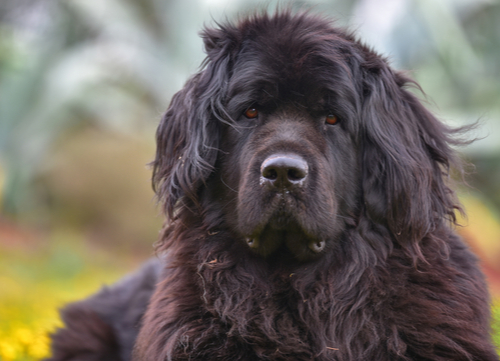
Health Care & Diet of the Newfoundland
Due to unprofessional and unethical breeding, some Newfoundlanders acquired diseases that were not examined thoroughly.
Newfoundland dog breeds are prone to:
Addison's Disease
Addison's Disease is a deficiency in the hormonal balance that causes the dog to have recurring gastrointestinal issues, unstable due to lack of an outlet for stress, and gradual loss of body state.
Although it cannot be prevented, having your dog checked up as recommended and keeping their medications taken up to date may decrease painful effects.
Dilated Cardiomyopathy (Cardiac Disease)
Dilated Cardiomyopathy is a gradual escalating loss of function and abnormalities of the heart. Due to heart muscles dilating and thinning of walls, heart failure is possible.
Dogs with this condition often have fluid build-up in the lungs can cause difficulty in breathing. Over time, the fluid build-up may become fatal for the dog.
Have your Newfoundland get their electrocardiography regularly, especially when they're adults, to detect whether they have an ongoing condition.
There is no prevention of heart diseases in dogs yet. But, with regular and follow-up checkups, a healthy lifestyle, and a diet, chances may decrease.
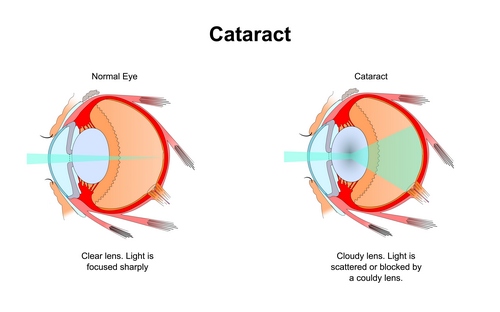
Cataracts
A cataract is an obstruction of lens fiber in the lens of an eye. The gradual clouding of the lens in the eyes. Although this is more common in elderly dogs, it can also be acquired through genetics, traumatic injuries in the eyes, nutritional deficiencies, or diabetes.
Have your pet get an ophthalmic examination to detect small cataracts as early as they step four to five years old.
To determine whether it is blinding or not, it is better to check with your veterinarian to be informed what procedure should be done.
Options for prevention of this disease are very small as well. Proper diet and refraining from exposure to toxins may lessen the risk for cataracts.
Cherry Eye
Cherry Eye is an ocular condition where-in the ligament in the third eyelid that holds the tear duct detaches from the orbital bone.
This causes the gland to prolapse and becomes visible in the outer eyelid. In its early stages, pain is unnoticeable, but pain is evident as it is more prominent.
The good news is it's not contagious and not fatal. Just make sure to have your Newfoundland checked up when they get the cherry eye.
If left untreated or prolonged, conditions may worsen and develop dry eye and infections in your pet.
Cystinuria or Urinary Stones
Cystinuria is an inherited condition. Newfoundlands have a strong appetite. Sometimes their diet includes excessive nutrients that they cannot break down.
Cystine stones may form in the kidney, and urinary stones are prone to this breed.
You can do prevention by providing healthy amounts of water daily and decreasing sodium in their diet.
Gastric Torsion (Bloat)
Gastric Torsion or Bloat is a gastrointestinal condition where-in a dog's stomach expands due to it teeming with fluid, food, or gas.
This can be a fatal circumstance if left untreated. In some cases, due to bloating, blood is trapped in the stomach preventing return and proper flow.
Prevention includes preventing your dog from doing activities right after a meal, eating too fast, large meals throughout the day, and stressing them. Treatment may depend on your veterinarian's observation.
Hip Dysplasia
Hip dysplasia is a genetic condition wherein the socket of the joint and ball becomes distorted.
Newfoundlands are prone to Hip Dysplasia. Due to their large stature, their mass stresses their lower body areas, especially in their joints.
When diagnosed with hip dysplasia, it's essential to keep their weight in the normal range and exercise with activities promoting joint therapy.
Veterinarians may prescribe medications for anti-inflammatory/ pain relievers and supplements.
Prevention is the same, keeping them active but not injuring them. A treadmill walk or swimming is perfect for prevention and recovery as well.
Ear Infection
Dogs like Newfoundland who have floppy ears are prone to infection. Causes may vary, but it's essential to have them checked during regular visits to the veterinarians. I
f you notice shaking of the head, unpleasant odor in the ears, or overly scratching of their ears, do have them checked immediately.
During their puppy stage, they may require plenty of nutrients and supplements in their diet, but their metabolism gradually decreases as they grow as an adult.
This breed does not require heavy meals throughout the day. Instead, giving them in small amounts distributed throughout the day is recommended, especially when overweight.
Newfoundland requires a significant number of nutrients daily. Providing them packed with nutrition but not too much on calories is essential.
A lot of domestic dogs are prone to obesity when fed homemade food. It's best to interchange it instead.
Make sure to inquire with your veterinarian regarding what foods to avoid.
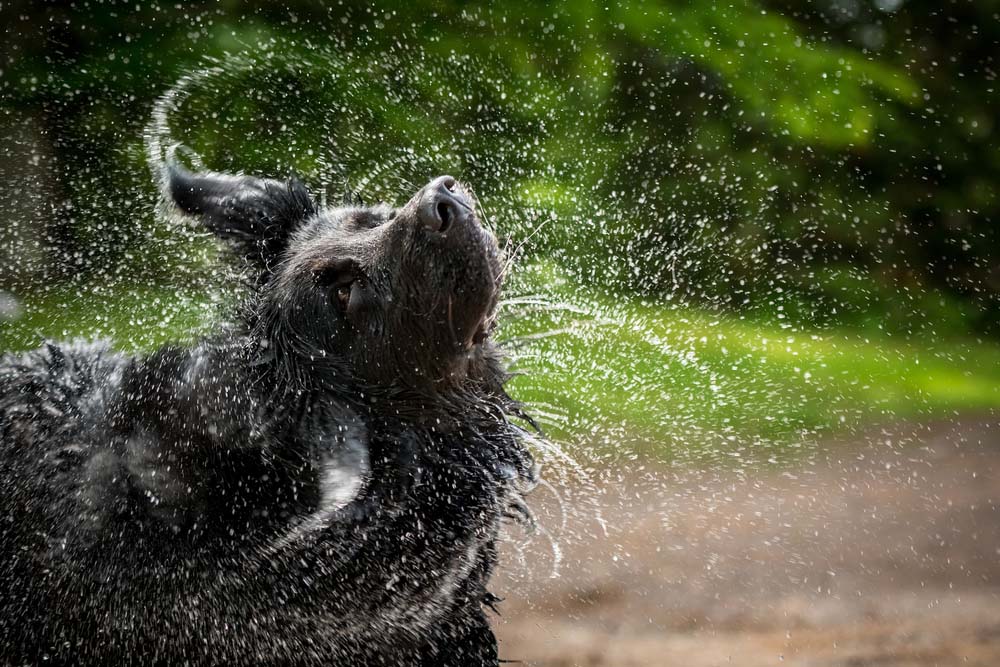
Newfoundland Grooming
It's crucial to introduce a grooming routine to Newfoundland Dogs when they're still puppies. Since they're in the larger group category, they'll be harder to restrain when they are adults.
Introducing grooming routines such as bathing, brushing the coat, clipping nails, and cleaning ears are better when they aren't abrupt. The best time to introduce grooming is when they're more relaxed or worn out from playtime.
When they're in this state, it's the perfect time to hold their paws or brush their hair several times. It's essential to be attentive to their reaction. When they feel agitated, you can pause and start again when they're more relaxed.
Newfoundland dog breeds have moderate shedding degrees. They have a double type of coat and are medium in length.
Maintaining their coat health isn't as extensive as proper grooming. At least a weekly brush can help keep their coat up to shape. It's essential to use an appropriate brush to avoid matting in their fur.
But during shedding season, they are recommended to brush at least four times a week. Their finer and lighter coats should blow in since their coat is preparing for the warm season. This helps prevent hot spots or infections break out.
They drool pretty often, maybe a towel or tissue would help if it bothers you. . Brushing their teeth is recommended at least thrice a week. It is to prevent build-up that may cause chronic Disease when they're older.
This breed requires trimming its nails frequently. Newfoundland breeds usually have dark coats and nails. Owners and breeders should be careful when trimming and shaving them.
If their nails do not seem sharp, shaving it is enough. It's crucial to determine where and when to shave their nails since Newfoundland's nails are usually dark.
Frequently Asked Questions
Do Newfoundlands need a lot of space?
Yes. Newfoundland dogs are generally huge, so they'll take up a lot of space. Since they have a massive build, keeping their joints and muscles moving is essential as well. If they are kept in a small space, they may So keep in mind their space requirement when adopting one.
Are Newfoundlands good on their own?
No. Newfoundland dog breeds are very friendly. They thrive on interaction with their owners or family. Leaving them alone for a few hours is alright, but if they are gone for an extended amount of time, they may tend to be depressed and destructive.
Especially Newfoundland puppies, they are easily bored and restless. It's better to have them in a trusted boarding or pet-sitters care.
Can Newfoundland dogs live somewhere warm?
Yes, but they are recommended to reside in a more relaxed place. They may shed their coat during spring and fall to prepare for summer, but it is built for colder seasons. If you reside in a warm area, it's best to have them within an air-conditioned or well-ventilated area.
Their fur is very thick. They have a double coat that sheds twice a year. If they're exposed to warm areas throughout the year, they may develop infections in hot spot areas.
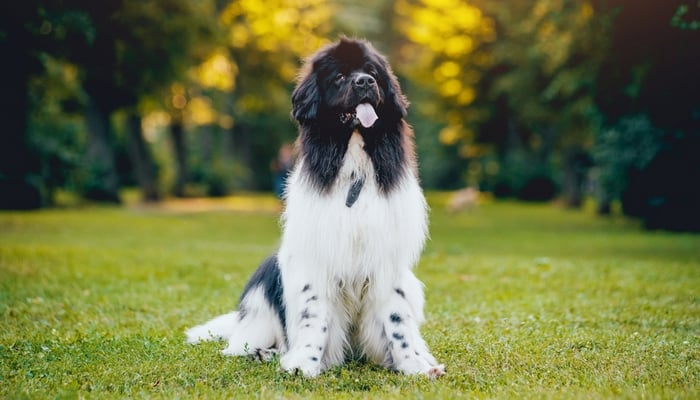
Newfoundland Dog Breed Profile Summary
The Newfoundlanders dog breed is a selfless companion and looks up to its owners more than anyone else. They can give as much as you can as well. Having a Newfoundland is embracing help and love.
As long as you take care of them, they'll be devoted to taking care of you or your family. Like Nana in Peter-Pan, she's got your back no matter what work lies ahead of you.
When it comes to training this kind of dog, best to give rewards and recognition when they behave during grooming routines as well, they need to recognize that this activity does not cause them harm.
Newfoundland is the perfect companion, not just for anyone. As you can see, they have a lot of essentials to bear in mind.
On the other hand, when it comes to Newfoundland puppies, they are a bit clingy, so it's essential to stay connected and take the time to be with them.
Also, remember that these bear-like companions will make their way to you with their much sweet love and care-giving nature. They'll be ready to face any circumstances for you, and I hope you'd do the same.
READ NEXT: CHIHUAHUA DOG BREED PROFILE


